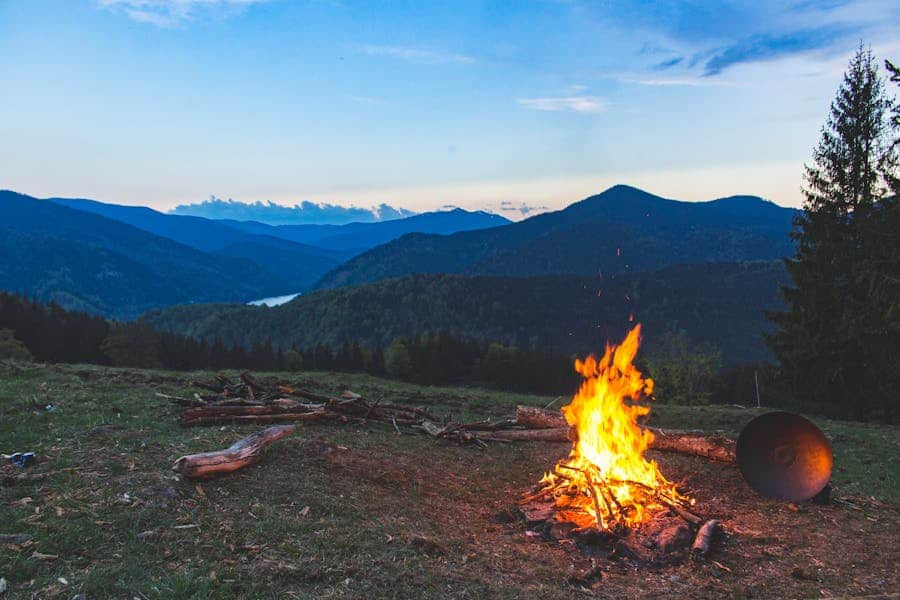 Camping in national forests embodies the quintessential American outdoor experience, offering the allure of unspoiled nature and untamed adventure. Yet, amid the vast wilderness, a persistent question lingers: Can you camp anywhere in a national forest? This article delves into the intricacies of camping regulations within these natural sanctuaries, shedding light on where and how to enjoy the great outdoors responsibly. By understanding the legal framework, environmental considerations, and practical guidelines, adventurers can embark on their wilderness journeys with clarity and confidence.
Camping in national forests embodies the quintessential American outdoor experience, offering the allure of unspoiled nature and untamed adventure. Yet, amid the vast wilderness, a persistent question lingers: Can you camp anywhere in a national forest? This article delves into the intricacies of camping regulations within these natural sanctuaries, shedding light on where and how to enjoy the great outdoors responsibly. By understanding the legal framework, environmental considerations, and practical guidelines, adventurers can embark on their wilderness journeys with clarity and confidence.
Can you camp anywhere in a national forest?
It’s important to note that camping in a national forest is not a free-for-all. While these forests offer vast expanses of wilderness, camping is subject to regulations. These rules are in place to preserve the environment and ensure public safety. Generally, camping is allowed only in designated campgrounds or areas specifically designated for dispersed camping. Dispersed camping, often subject to guidelines like the “Leave No Trace” principles, allows camping outside of designated campgrounds but with certain restrictions to minimize impact on the environment. It’s crucial to research and adhere to the specific rules of the national forest you plan to visit. This understanding will ensure a safe and responsible camping experience, which is the ultimate goal of this article.
Management And Regulations: The Role Of The U.S. Forest Service
The U.S. Forest Service, an agency under the U.S. Department of Agriculture, plays a crucial role in the management and regulation of activities within national forests. Its primary mission is to sustain the health, diversity, and productivity of the nation’s forests and grasslands for the benefit of present and future generations. Understanding the authority and mission of this agency is key to comprehending the camping regulations in national forests.
Resource Management: One of the U.S. Forest Service’s key responsibilities is managing the natural resources found within national forests. This includes overseeing timber harvesting, mineral extraction, wildlife conservation, and watershed protection.
Recreation Management: The U.S. Forest Service is also tasked with managing recreational activities within national forests, including camping, hiking, fishing, hunting, and more. This involves maintaining campgrounds, trails, and other recreational facilities and enforcing regulations to ensure visitor safety and preserve the wilderness experience.
Environmental Stewardship: The U.S. Forest Service is deeply committed to promoting environmental stewardship and sustainability in all its activities. This includes implementing policies and practices to minimize the environmental impact of human activities within national forests, such as enforcing Leave No Trace principles and monitoring air and water quality. This commitment ensures that the natural beauty of national forests is preserved for future generations of outdoor enthusiasts to enjoy.
Regulatory Oversight: The U.S. Forest Service establishes and enforces regulations governing various activities within national forests. These regulations are designed to balance the needs of multiple stakeholders, including outdoor enthusiasts, conservationists, industry, and local communities. They may vary depending on the specific forest and its resources.
Public Engagement: The U.S. Forest Service actively engages with the public to gather input on forest management decisions and to educate visitors about responsible recreation and conservation practices. Public involvement plays a crucial role in shaping national forests’ management policies and priorities.
Where You Can Camp?
Designated Campgrounds: National forests typically offer designated campgrounds equipped with amenities such as tent pads, fire rings, picnic tables, and sometimes restroom facilities. These campgrounds are managed by the U.S. Forest Service or concessionaires and often require reservations, particularly during peak seasons. While staying in designated campgrounds, campers can enjoy various services and facilities, including organized activities and ranger programs.
Dispersed Camping Areas:
For those seeking a more secluded and primitive camping experience, many national forests allow dispersed camping in designated areas. Dispersed camping involves outside designated campgrounds, usually in undeveloped areas along forest roads or trails. However, dispersed camping is subject to specific regulations and guidelines to minimize environmental impact and ensure visitor safety. Campers must adhere to Leave No Trace principles, pack out all waste, and avoid damaging vegetation or wildlife habitat. Additionally, some national forests may require permits for dispersed camping, particularly in high-use areas or sensitive ecosystems.
Backcountry Camping:
National forests often contain extensive backcountry areas accessible by hiking, backpacking, or horseback riding. These remote and pristine landscapes offer opportunities for adventurous campers to immerse themselves in nature and explore rugged terrain. Backcountry camping typically requires higher self-sufficiency, as amenities and services are limited or nonexistent. Campers must practice wilderness ethics, including proper waste disposal, wildlife awareness, and responsible fire management. Permits may be required for overnight stays in designated wilderness areas or during peak seasons to manage visitor use and protect fragile ecosystems.
Special-Use Areas:
Some national forests designate special-use areas where camping is permitted under specific conditions or for particular activities. These may include designated hunting camps, fishing access sites, or recreational cabins available for rent. Special-use areas often have unique regulations and restrictions tailored to the area’s specific needs and resources. Campers should consult with the managing agency or review area-specific guidelines before planning a trip to ensure compliance with applicable rules and regulations.
When Permits Are Necessary, And How To Obtain Them?
Dispersed Camping Permits: In some national forests, permits are required for dispersed camping in designated areas. These permits help manage visitor use and protect sensitive ecosystems. Permit requirements vary depending on the forest and specific camping location. To obtain a dispersed camping permit, campers must visit the forest ranger station or visitor center in person or check the forest’s website to obtain permits online. The process may involve filling out a permit application, paying associated fees, and receiving instructions or guidelines for dispersed camping in the area.
In wilderness areas or backcountry zones of national forests, overnight camping permits may be required to manage visitor use and protect fragile ecosystems. Permits are often necessary for overnight stays in designated wilderness areas, particularly during peak seasons or for high-demand destinations. Campers can usually obtain backcountry camping permits by contacting the forest’s wilderness office, ranger station, or visitor center. The permitting process may involve submitting a permit application, specifying trip details such as dates, group size, and camping locations, and paying applicable fees. Some forests offer online reservation systems for backcountry camping permits, while others require in-person permit issuance.
Certain activities or events within national forests may require special-use permits, including large-group camping, commercial filming, organized events, or activities that involve special equipment or facilities. These permits help ensure public safety, minimize environmental impact, and regulate the use of forest resources. Campers should inquire with the forest’s permitting office or visit the website for information on obtaining special-use permits and applicable regulations. The permitting process typically involves submitting an application detailing the proposed activity, obtaining approval from the forest service, and complying with any permit conditions or restrictions.
In regions prone to wildfires or during fire season, permits may be required for campfires, stove use, or other open flames in national forests. These permits help prevent human-caused wildfires and ensure safe fire management practices. Campers can obtain fire permits by contacting the Forest Service office ranger station or visiting the forest website for information on fire restrictions and permit requirements. The permitting process may involve completing a fire permit application, attending a fire safety briefing or orientation, and adhering to specific regulations for fire use in the area.
Tips For A Successful Camping Trip
- Plan Ahead: Research your camping destination thoroughly, including the availability of campgrounds, permit requirements, and any special regulations or restrictions. Make reservations for campsites or obtain necessary permits well in advance, especially during peak seasons or for popular destinations.
- Pack Essentials: Create a checklist of essential camping gear and supplies to ensure you have everything for a comfortable and safe trip. This may include a tent, sleeping bags and pads, cooking equipment, food and water, clothing for various weather conditions, navigation tools, a first aid kit, and personal items.
- Check the Weather: Monitor weather forecasts for your camping area and prepare accordingly. Pack appropriate clothing and gear for the expected conditions, including rain gear, extra layers for cold nights, and sun protection for hot and sunny days. Be prepared to adjust your plans or activities based on changing weather conditions.
- Practice Leave No Trace: Follow Leave No Trace principles to minimize your impact on the environment and preserve the natural beauty of the wilderness. Pack out all trash and waste, dispose of it properly, minimize campfire impacts, respect wildlife and vegetation, and leave campsites cleaner than you found.
- Stay Safe: Prioritize safety during your camping trip by following basic outdoor safety guidelines. Familiarize yourself with local hazards such as wildlife encounters, poisonous plants, and natural disasters. Bring a map, compass, or GPS device, and stay on designated trails to avoid getting lost. Carry a first aid kit and know how to administer basic first aid for common injuries.
- Respect Wildlife: Keep wildlife wild by observing from a distance and avoiding feeding or approaching animals. Store food and garbage securely to prevent attracting wildlife to your campsite. Be aware of potential wildlife encounters and take appropriate precautions to avoid conflicts.
- Practice Campfire Safety: If campfires are permitted, follow proper safety practices to prevent wildfires. Use designated fire rings or pits, or build a fire safely and responsibly. Keep fires small and manageable, never leave them unattended, and fully extinguish them before leaving the campsite or going to sleep.
- Embrace the Experience: Take time to disconnect from technology and immerse yourself in the beauty of nature. Engage in outdoor activities such as hiking, fishing, birdwatching, or stargazing. Enjoy quiet moments of solitude or socialize with fellow campers around the campfire. Cherish the memories made during your camping adventure and leave with a renewed appreciation for the great outdoors.
Conclusion
A successful camping trip hinges on careful planning, respect for nature, and a spirit of adventure. By following these tips and embracing responsible outdoor practices, campers can enjoy memorable experiences in national forests while preserving these treasured landscapes for future generations. So, pack your gear, hit the trail, and immerse yourself in the wonders of the wilderness – happy camping!
FAQ’s
Q. How long can you camp in a national forest?
A. Length of stay limits vary by forest and may be specified for developed campgrounds and dispersed camping areas. Check with the managing agency or review forest regulations to determine maximum stay durations for your camping destination.
Q. Are campfires allowed in national forests?
A. Campfire regulations vary depending on fire danger levels, weather conditions, and specific forest policies. In some areas, fires may be prohibited at certain times or restricted to designated fire rings or pits. Always check current fire restrictions and follow established guidelines for safe campfire use.
Q. Can you bring dogs camping in national forests?
A. Many national forests allow dogs in campgrounds and on trails, but specific regulations may vary. Dogs must be kept on a leash and controlled at all times to minimize impacts on wildlife and other visitors. Check the forest’s pet policy and guidelines for camping with dogs before bringing your furry friend along.








